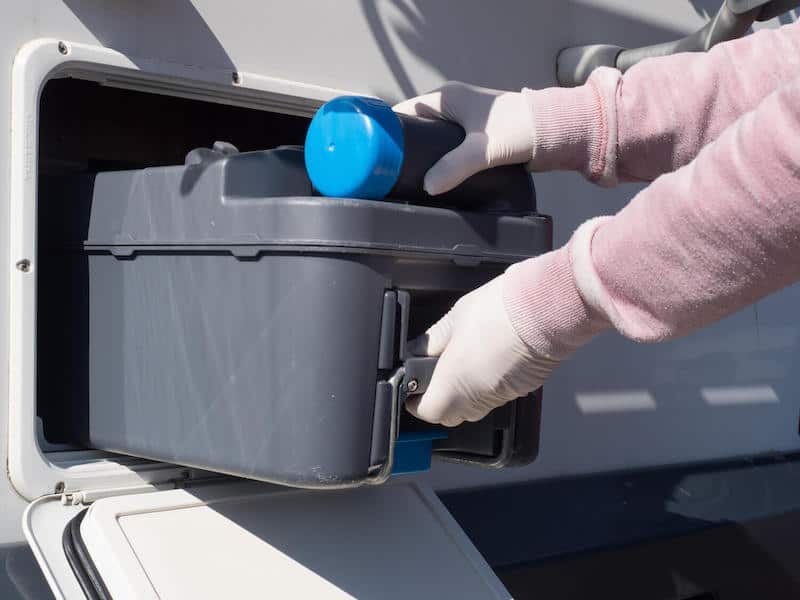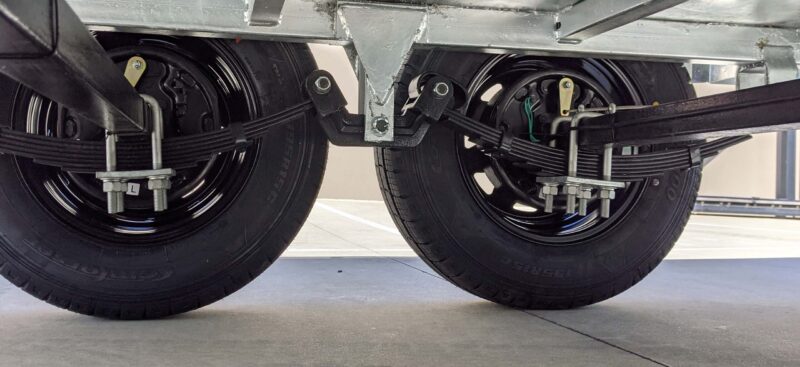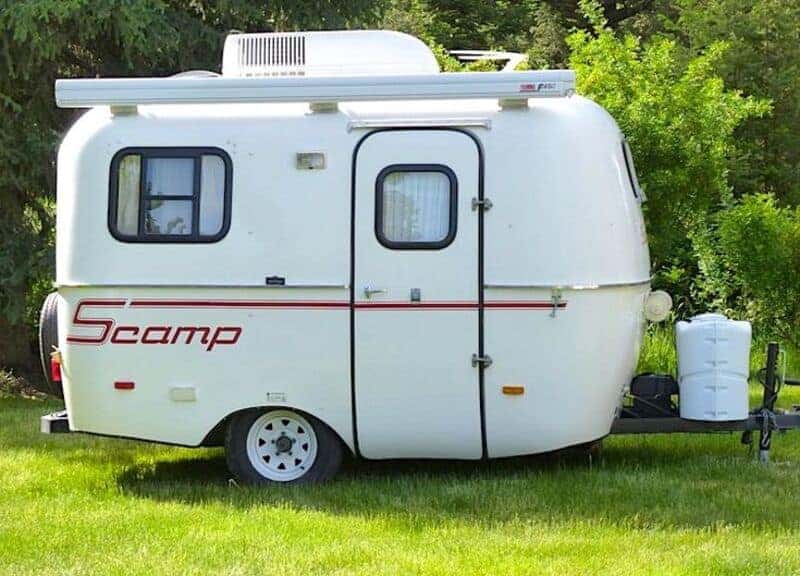Our friends Dave and Tanya from Let’s Turn It Up World have a cassette toilet with a 5-gallon holding capacity in their Winnebago EKKO and weren’t thrilled with it. They seemed so unhappy that they also used an outdoor toilet in a tent. So, it made me curious about what exactly a cassette toilet is and how they work.
We boondocked with Dave and Tanya for three weeks during the filming of RV Unplugged so we became acutely aware of their bathroom habits – lol!
Cassette toilets have long been a point of contention within the RV community. Their smaller tanks and potential for odors often deter people.
Yet, these compact facilities can be quite beneficial in meeting specific needs and preferences.
Despite their presence in the market, many people remain uncertain about what cassette toilets are and how they function.
This blog post demystifies these devices, offering a comprehensive breakdown to help you understand if a cassette toilet could be the right choice for your RV adventures.
What Is A Cassette Toilet?
A cassette toilet is a portable toilet commonly used in RVs and boats. Unlike traditional toilets, a cassette toilet has a detachable waste-holding tank you can empty at designated disposal sites.
The design of a cassette toilet comprises two main parts: the permanent toilet seat and bowl fixture and the removable cassette waste tank.
The location of the waste tank is usually directly below the toilet bowl and sometimes conveniently accessible from outside the RV.
One of the key advantages of a cassette toilet is its compact size, which makes it an ideal choice for smaller RVs where space is a premium. Because the waste tank is removable, it eliminates the need for a fixed black tank and sewer hose system for waste disposal.
Instead, users can remove the cassette, transport it to a suitable waste disposal point, empty it, clean it, and reinsert it back into the toilet unit.
How Does A Cassette Toilet Work?
A cassette toilet operates similarly to a regular household toilet, albeit with a few key differences because of its portability and the need for manual waste disposal.
Here’s a step-by-step breakdown of how a cassette toilet works:
- Open the Valve: Before use, you must open the valve separating the toilet bowl from the waste-holding tank beneath it. Usually, to flush the toilet, you slide a handle or press a button.
- Usage: Once the valve is open, you can use the toilet just like a regular one. When you’re done, the waste will fall directly into the holding tank below.
- Flushing: After use, you need to flush the toilet. In most cassette toilets, you flush manually using a hand pump, button, or lever. This releases a small amount of water (and sometimes toilet chemicals) into the bowl to rinse away waste. Some models may also have an electric flush mechanism.
- Close the Valve: Closing the valve again after flushing is essential. This seals off the waste tank, helping to contain odors and prevent waste from moving inside the tank when the vehicle is in motion.
- Emptying the Tank: When the waste tank is full, detach it from the toilet unit (accessed from an external door outside your RV), take it to a designated waste disposal area, and empty it. After rinsing the tank out, you can reinsert it into the toilet unit, ready for use again.
How Do You Dump A Cassette Toilet?
Dumping your cassette toilet might not be the highlight of your RV journey, but it’s a necessary task.
Let’s break it down:
- Close the valve: Before removing the tank, ensure the valve is closed to prevent spillage.
- Release the latch: Locate the latch that holds the tank in place and release it. This will allow you to remove the tank from its compartment.
- Access the tank: A side exterior door on the RV gives access to the cassette toilet compartment. Open this door to access the tank.
- Remove and roll the tank: Remove it from its compartment and roll it to a restroom or dump station. The tank has wheels and an extendable handle for easy transportation.
- Dump out the contents: Point the pour-out spout downwards on the dumping hole at the dump station or restroom and start emptying. Rinse the tank a few times with clean water.
Do Cassette Toilets Smell?
Yes, cassette toilets can give off an unpleasant odor. The smell is usually more noticeable during the dumping process.
However, several ways exist to minimize the odor and make the process more pleasant.
One way to reduce the smell is to use tank chemicals.
These chemicals help break down the waste and reduce odors. Depending on the product’s instructions, you can add them to the tank before or after use.
Another way to minimize the smell is to dump your cassette toilet regularly. Leaving waste in the tank for too long can cause it to build up and produce more odors.
Are A Cassette Toilet And A Portable Toilet The Same?
No, cassette toilets and portable toilets are not the same.
While portable toilets are a single unit you can move around, cassette toilets are installed in RVs and comprise two parts: a toilet bowl and a removable waste tank.
You can remove and empty the waste tank of cassette toilets at a dump station or restroom.
Another difference between cassette toilets and portable toilets is that cassette toilets use water to flush waste into the tank, while many portable toilets are dry and do not use water.
4 Advantages Of Cassette Toilets
Cassette toilets have several advantages over traditional black tanks.
1. No black tank problems
Cassette toilets do not have a black tank, so you don’t have to worry about the tank getting clogged or damaged.
2. No gross sewer hoses
With a cassette toilet, you don’t need a sewer hose to dump the waste. Instead, you can remove the waste tank and take it to a dump station or restroom.
3. Less weight than large black tanks
Cassette toilets are much lighter than traditional black tanks, which can help improve your RV’s weight and fuel efficiency.
4. Can be dumped at restrooms instead of finding a dump station
According to Dave and Tanya, since cassette toilets are portable, you can dump them in any restroom, which can be more convenient than finding a dump station.
4 Disadvantages Of Cassette Toilets
While cassette toilets have several advantages, they also have some disadvantages.
1. They can smell
Cassette toilets can give off an unpleasant odor, especially during dumping. However, using RV tank chemicals and dumping your toilet regularly can help minimize the smell.
2. Dumping is kind of gross
Dumping the waste tank is not the most pleasant task, but it’s a necessary part of using a cassette toilet. However, following the correct procedure and wearing gloves can help make the process more manageable.
3. Small tank means frequent dumping
Cassette toilets are smaller than traditional black tanks, so you must frequently empty them. However, you can offset this inconvenience by dumping them in any restroom with a dumping hole.
4. You have to closely monitor your waste
When you’re hooked up to sewer connections, you never have to worry about your waste levels. Even while boondocking large RV, black tanks can last throughout your trip. With cassette toilets, you must always be aware of your waste levels.
2 FAQs About Cassette Toilets
If you’re new to cassette toilets, you might have questions about how they work.
Here, we answer some of the most frequently asked questions about cassette toilets.
1. How often do they need to be dumped?
Cassette toilets are smaller than traditional black tanks, so you must frequently empty them.
This process can be inconvenient if you’re camping in a remote area without access to a dump station or restroom.
2. What types of RVs use cassette toilets?
Cassette toilets are commonly found in smaller RVs because they are compact and easy to maintain.
Their small design means they take up less space, which is a crucial consideration in smaller RVs where every inch counts.
Here are some types of RVs that typically use cassette toilets:
- Class B Motorhomes: Class Bs are small motorhomes perfect for individuals or couples. Their compact size makes them ideal for cassette toilets.
- Camper Vans: Similar to Class B motorhomes, camper vans are small, versatile, and easy to drive. The limited space inside a camper van makes a cassette toilet a practical choice.
- Small Travel Trailer Campers: These are towable RVs that range in size. Smaller models may opt for a cassette toilet to save space and weight.
- Small Truck Campers: Truck campers are designed to be carried in the bed of a pickup truck. Because of their small size, a cassette toilet can be a good fit.
Is A Cassette Toilet Right For You?
Several factors must be considered before you decide to use a cassette toilet.
First, if you’re sensitive to unpleasant odors or don’t want to deal with the dumping process, a cassette toilet may not be the best option.
However, a cassette toilet can be a great space-saving option if you’re looking for a toilet in a small camper or RV.
Since the waste tank is removable, it doesn’t take up as much space as a traditional black tank.
Another advantage of cassette toilets is that they are self-contained units and can be used in locations without hookups. This makes them ideal for boondocking or camping in remote areas.
While you’ll still need to find a restroom to dump the waste, it’s often easier than finding a dump station.
Whether a cassette toilet is right depends on your specific needs and preferences.
If you are okay dealing with the smell and dumping process and want a toilet option in a small camper or RV or frequently travel in remote areas without access to hookups or dumping stations, a cassette toilet can be a great option.
Final Thoughts About Cassette Toilets
In our opinion, which we formed from speaking with RV owners who have cassette toilets, cassette toilets are popular for RVers and campers who want a convenient, space-saving option. They cost less than traditional black tanks and are easier to maintain.
However, they have some disadvantages, such as the need for frequent dumping and the unpleasant odor that can occur during disposal.
Despite their disadvantages, cassette toilets are an excellent option for those who want a toilet in their small camper or RV.
They are also ideal for those who frequently travel in remote areas without access to hookups or dumping stations.
It is crucial to consider a cassette toilet, weighing the pros and cons, and determining if it’s the right choice for you.
Related Reading:
– Do You Really Have To Use RV Toliet Paper?
– 11 Proven Ways To Eliminate RV Toilet Smells
– 20 Best Small Campers With Bathrooms
– 10 Best Teardrop Trailers With Bathrooms
About the Author:
Mike Scarpignato is an avid RVer who owns a Class C RV and a Class A RV. He loves to travel with his wife Susan and write blog articles about the RV lifestyle.
Mike and Susan also make YouTube videos on the RVBlogger YouTube channel.




